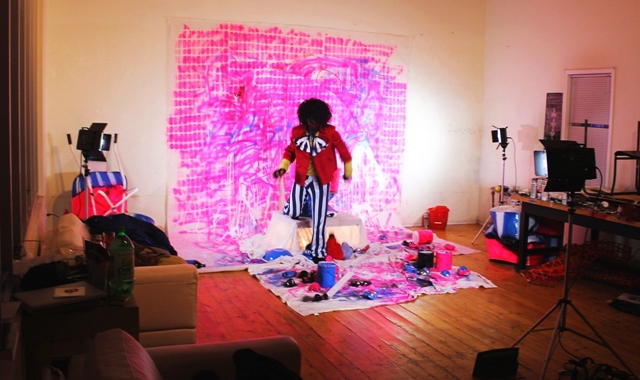I was excited to attend the opening of the Substation Contemporary Art Prize last month because my friend David Thomson was one of 50 finalists in the exhibition.
Overall I was disappointed with the exhibition. The three prizes awarded were all for video works. There were about 13 videos in the show. The SCAP is intended to ‘recognise and encourage innovation in contemporary art practice’.
A video work has to grab my attention or entertain me in the first minute or I turn off. We are so bombarded by video, TV, advertising, movies, music clips, youtube, that video art has to be really clever or beautiful to stand out (and preferably short!) I dislike work with an obscure conceptual artist statement full of big words that I can’t understand, that I suspect is actually meaningless art wank.
You shouldn’t have to study art theory or have specialist knowledge to appreciate an artwork. I love art, and have studied it for four years, so if I can’t understand the concept behind an artwork, how is the average viewer supposed to understand it?
In the project, by Eric Bridgeman, was a video diary filmed during a artist residency in Canada in 2011. Bridgeman dressed up as a golliwog character and cavorted around his studio in front of a camera. I thought it was self-indulgent narcissism, and I couldn’t believe it when it won first prize and the judge described it as a ‘layered work’ about being an outsider. I don’t understand how this work has any more artistic merit than, say, reality TV footage or an amateur video diary on Youtube. I couldn’t watch the whole thing, I found it repetitive and boring.

Still from In the project, Eric Bridgeman, video/DVD, 2012
I think that in 100 years time, video art may be seen as a fad in modern art from the 1960s until now, especially popular since the 1990s. After several decades, the medium is hardly ‘innovative’. The art world is cyclical. It depends on what the art schools are encouraging students to do, and critics and curators are promoting, and it seems they are still pushing video and multi-media work rather than traditional painting, drawing and printmaking. Continue reading “The Substation Contemporary Art Prize 2013”
